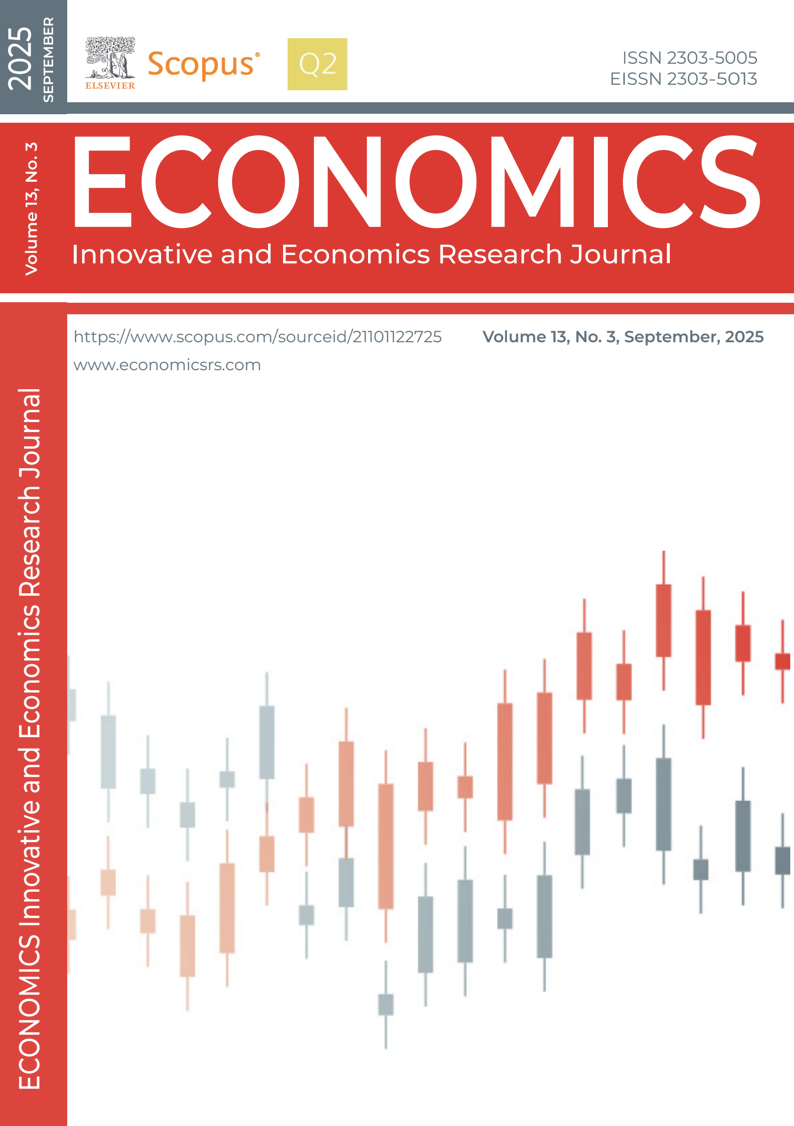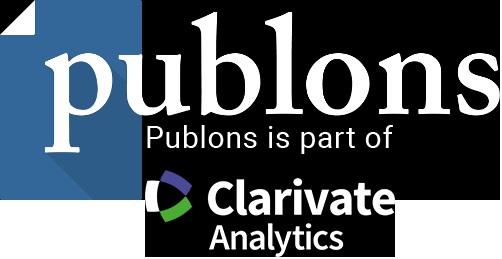THE ROLE OF DIGITAL INNOVATION BEHAVIOUR, EMPLOYEE SATISFACTION AND WORKFORCE AGILITY ON EMPLOYEE PERFORMANCE DURING DIGITAL ERA
DOI:
https://doi.org/10.2478/eoik-2025-0068Keywords:
Digital innovation work behaviour, employee satisfaction, employee agility, performance, Indonesian manufacturingAbstract
The purpose of this study is to analyze the relationship between digital
innovative behaviour variables and employee performance, the rela-
tionship between job satisfaction variables and employee performance
and analyze the relationship between workforce agility variables and
employee performance. The strategy used in this study is associative.
An associative strategy is a research strategy used to determine the re-
lationship between two or more variables. The research method used
in this study is a quantitative approach. In this study, a purposive sam-
pling technique was used because the sampling was taken with certain
considerations or criteria that must be met. The data collection meth-
od in this study was carried out by distributing online questionnaires
through social media. The respondents in this study were 432 manu-
facturing managers in Indonesia. The scale used to measure is a scale
with an interval of 1 - 5, from strongly disagree to strongly agree.
In measuring respondent answers, filling out the questionnaire was
measured using a Likert scale. The data collection technique in this
study used a questionnaire by providing several written statements
addressed to the respondents and then answered. Structural equation
modelling which is often called Partial Squares Structural Equation
Modeling (PLS-SEM) with SmartPLS version 3.0. The results of this
study show that innovative supply chain behaviour has a positive and
significant relationship to performance, Job satisfaction has a signif-
icant positive influence on employee performance, and workforce
agility has a significant positive influence on employee performance.
References
Azmy, A. (2021). The effect of employee engagement and job satisfaction on workforce agility through
talent management in public transportation companies. Media Ekonomi Dan Manajemen, 36(2),
-229. http://dx.doi.org/10.24856/mem.v36i2.2190
Alabood, A., & Manakkattil, S. (2023). Workplace agility, intrinsic motivation, and role congruence an-
tecedents of innovative work behavior: Evidence from Saudi Arabian organizations. Problems
and Perspectives in Management, 21(3), 448-466. http://dx.doi.org/10.21511/ppm.21(3).2023.36
Afraz, M. F., Bhatti, S. H., Ferraris, A., & Couturier, J. (2021). The impact of supply chain innovation on
competitive advantage in the construction industry: Evidence from a moderated multi-mediation
model. Technological Forecasting and Social Change, 162, 120370. https://doi.org/10.1016/j.
techfore.2020.120370
Abbas, A., Luo, X., Wattoo, M. U., & Hu, R. (2022). Organizational behavior in green supply chain inte-
gration: Nexus between information technology capability, green innovation, and organizational
performance. Frontiers in psychology, 13, 874639. https://doi.org/10.3389/fpsyg.2022.874639
Anser, M. K., Yousaf, Z., Khan, A., & Usman, M. (2021). Towards innovative work behavior through
knowledge management infrastructure capabilities: Mediating role of functional flexibility and
knowledge sharing. European Journal of Innovation Management, 24(2), 461-480. https://doi.
org/10.1108/EJIM-09-2019-0250
Aumeboonsuke, V. (2025). Digital Convergence and Divergence in EU and ASEAN Economies. Economics -
innovative and economics research journal, 13(1), 153–177. https://doi.org/10.2478/eoik-2025-0002
Chiu, M. L., & Lin, C. N. (2022). Developing supply chain open innovation capability: The mediating
role of the knowledge creation process, governance mechanism and technology as a driver.
Journal of Innovation & Knowledge, 7(4), 100264. https://doi.org/10.1016/j.jik.2022.100264
Dzimidienė, A., & Bagdžiūnienė, D. (2022). The Effect of Employee Agility and Self-Efficacy on In-
novative Behavior at Work. Psichologija, 67, 70-88. https://doi.org/10.15388/Psichol.2022.60
Fayezi, S., Zutshi, A., & O’Loughlin, A. (2017). Understanding and development of supply chain agil-
ity and flexibility: a structured literature review. International journal of management reviews,
(4), 379-407. https://doi.org/10.1111/ijmr.12096
Faisal, S. M., & Idris, S. (2020). Innovation factors influencing the supply chain technology (sct) adop-
tion: Diffusion of innovation theory. International Journal of Social Science Research, 2(2),
-145. https://myjms.mohe.gov.my/index.php/ijssr/article/view/9881
Georgieva, D. (2025). Signmatics: An Interactive Digital Based System for Multimodal Learning of
Hearing Students in Bulgarian Sign Language. International Journal of Cognitive Research in
Science, Engineering and Education (IJCRSEE), 13(1), 117–125. https://doi.org/10.23947/2334-
-2025-13-1-117-125
Goffnett, S. P., & Goswami, A. (2016). Supply chain transformational leadership, supply chain inno-
vation performance, and satisfaction with relationships and results: moderating role of supply
chain innovativeness. International Journal of Logistics Systems and Management, 24(3), 356-
https://www.inderscienceonline.com/doi/abs/10.1504/IJLSM.2016.076892
Gligor, D., Gligor, N., Holcomb, M., & Bozkurt, S. (2019). Distinguishing between the concepts of sup-
ply chain agility and resilience: A multidisciplinary literature review. The International Journal
of Logistics Management, 30(2), 467-487. https://doi.org/10.1108/IJLM-10-2017-0259
Hariyasasti, Y. (2025). The Influence of Competence, Work Culture on the Performance of Elementary
School Teachers in Gunungwungkal District. International Journal of Social, Policy and Law,
(1), 37-41. https://www.ijospl.org/index.php/ijospl/article/view/184
Hariyasasti, Y. (2025). The Role of Transformational Leadership and Principal’s Work Motivation on
the Performance of Elementary School Teachers in Gunungwungkal District. Journal of Indus-
trial Engineering & Management Research, 6(1), 68-72. https://jiemar.org/index.php/jiemar/
article/view/569
The Role of Digital Innovation Behaviour, Employee Satisfaction and Workforce Agility on Employee
Performance During Digital Era
Hair, J.F., Sarstedt, M., Ringle, C.M., Sharma, P.N. and Liengaard, B.D. (2024), Going beyond the un-
told facts in PLS–SEM and moving forward, European Journal of Marketing, 58(13), 81-106.
https://doi.org/10.1108/EJM-08-2023-0645
Henseler, J., Ringle, C.M. and Sinkovics, R.R. (2009), “The use of partial least squares path modeling
in international marketing”, Sinkovics, R.R. and Ghauri, P.N. (Ed.) New Challenges to Inter-
national Marketing (Advances in International Marketing, Vol. 20), Emerald Group Publishing
Limited, Leeds, 277-319. https://doi.org/10.1108/S1474-7979(2009)0000020014
Hong, J., Liao, Y., Zhang, Y., & Yu, Z. (2019). The effect of supply chain quality management practices and
capabilities on operational and innovation performance: Evidence from Chinese manufacturers. Inter-
national Journal of Production Economics, 212, 227-235. https://doi.org/10.1016/j.ijpe.2019.01.036
Isaksson, R., Johansson, P., & Fischer, K. (2010). Detecting supply chain innovation potential for sustainable
development. Journal of business ethics, 97, 425-442. https://doi.org/10.1007/s10551-010-0516-z
Jimenez-Jimenez, D., Martínez-Costa, M., & Sanchez Rodriguez, C. (2019). The mediating role of supply
chain collaboration on the relationship between information technology and innovation. Journal
of Knowledge Management, 23(3), 548-567. https://doi.org/10.1108/JKM-01-2018-0019
Knoppen, D., Johnston, D., & Sáenz, M. J. (2015). Supply chain relationships as a context for learn-
ing leading to innovation. The International Journal of Logistics Management, 26(3), 543-567.
https://doi.org/10.1108/IJLM-09-2012-0089
Khalil, M., Khalil, R., & Khan, S. (2019). A study on the effect of supply chain management practices on
organizational performance with the mediating role of innovation in SMEs. Uncertain Supply
Chain Management, 7(2), 179-190. https://doi.org/10.3389/fpubh.2022.813828
Li, Q., Zhang, H., Liu, K., Zhang, Z. J., & Jasimuddin, S. M. (2024). Linkage between digital sup-
ply chain, supply chain innovation and supply chain dynamic capabilities: An empirical study.
The International Journal of Logistics Management, 35(4), 1200-1223. https://doi.org/10.1108/
IJLM-01-2022-0009
Liao, S. H., Hu, D. C., & Shih, Y. S. (2021). Supply chain collaboration and innovation capability: the
moderated mediating role of quality management. Total Quality Management & Business Ex-
cellence, 32(3-4), 298-316. https://doi.org/10.1080/14783363.2018.1552515
Mohamed El-Sayed, N., & Mahmoud Abdel-Azeem, A. (2022). The Relationship between Workforce
Agility and Staff Nurses’ Innovative Work Behavior at Critical Care Units. Egyptian Journal of
Health Care, 13(3), 560-573. https://dx.doi.org/10.21608/ejhc.2022.253723
Malacina, I., & Teplov, R. (2022). Supply chain innovation research: A bibliometric network analysis
and literature review. International Journal of Production Economics, 251, 108540. https://doi.
org/10.1016/j.ijpe.2022.108540
Mastilo, Z., Barić, F. & Puška, A. (2025). Challenges and Opportunities of Implementing Digital Pay-
ment Systems in Southeast European Countries. Journal of Central Banking Theory and Prac-
tice, 14(2), 5-28. https://doi.org/10.2478/jcbtp-2025-0011
Mazzola, E., Bruccoleri, M., & Perrone, G. (2015). Supply chain of innovation and new product develop-
ment. Journal of purchasing and supply management, 21(4), 273-284. https://doi.org/10.1016/j.
pursup.2015.04.006
Michalski, M., Montes, J. L., & Narasimhan, R. (2019). Relational asymmetry, trust, and innovation in
supply chain management: a non-linear approach. The International Journal of Logistics Man-
agement, 30(1), 303-328. https://doi.org/10.1108/IJLM-01-2018-0011
Neutzling, D. M., Land, A., Seuring, S., & do Nascimento, L. F. M. (2018). Linking sustainability-ori-
ented innovation to supply chain relationship integration. Journal of cleaner production, 172,
-3458. https://doi.org/10.1016/j.jclepro.2017.11.091
Oke, A., Prajogo, D. I., & Jayaram, J. (2013). Strengthening the innovation chain: The role of internal
innovation climate and strategic relationships with supply chain partners. Journal of Supply
Chain Management, 49(4), 43-58. https://doi.org/10.1111/jscm.12031
Calen et al. / Economics - Innovative and Economics Research Journal, doi: 10.2478/eoik-2025-0068
Pham, H., Pham, T., & Dang, C. N. (2022). Assessing the importance of transformational leadership
competencies and supply chain learning to green innovation: construction practitioners’ per-
spectives. Construction Innovation, 22(4), 1138-1154. https://doi.org/10.1108/CI-03-2021-0037
Peterson, H. C. (2009). Transformational supply chains and the ‘wicked problem’of sustainability:
aligning knowledge, innovation, entrepreneurship, and leadership. Journal on Chain and Net-
work Science, 9(2), 71-82. https://doi.org/10.3920/JCNS2009.x178
Petkova, D. (2025). Cross-modal Priming of a Music Education Event in a Digital Environment. In-
ternational Journal of Cognitive Research in Science, Engineering and Education (IJCRSEE),
(1), 75–81. https://doi.org/10.23947/2334-8496-2025-13-1-75-81
Ringle, C. M., Sarstedt, M., & Straub, D. W. (2012). Editor’s comments: a critical look at the use of
PLS-SEM in” MIS Quarterly”. MIS quarterly, iii-xiv. https://doi.org/10.2307/41410402
Sampson, S. E., & Spring, M. (2012). Customer roles in service supply chains and opportunities for
innovation. Journal of Supply Chain Management, 48(4), 30-50. https://doi.org/10.1111/j.1745-
X.2012.03282.x
Shan, H., Li, Y., & Shi, J. (2020). Influence of supply chain collaborative innovation on sustainable de-
velopment of supply chain: a Study on Chinese Enterprises. Sustainability, 12(7), 2978. https://
doi.org/10.3390/su12072978
Shevchenko, I. (2023). A Methodical Approach to Determining the Level of Development of Digital
Trade in Global Markets. Collection of papers new economy volume, 1(1), 196-216. https://doi.
org/10.61432/CPNE0101196s
Solaimani, S., & van der Veen, J. (2022). Open supply chain innovation: an extended view on sup-
ply chain collaboration. Supply Chain Management: An International Journal, 27(5), 597-610.
https://doi.org/10.1108/SCM-09-2020-0433
Srimulyani, V. A. (2023). Job involvement and innovative work behavior: The role of learning agil-
ity as mediation. Jurnal Manajemen Universitas Bung Hatta, 18(02), 218-230. https://doi.
org/10.37301/jmubh.v18i2.23157
Swafford, P. M., Ghosh, S., & Murthy, N. (2008). Achieving supply chain agility through IT integra-
tion and flexibility. International journal of production economics, 116(2), 288-297. https://doi.
org/10.1016/j.ijpe.2008.09.002
Storer, M., Hyland, P., Ferrer, M., Santa, R., & Griffiths, A. (2014). Strategic supply chain management
factors influencing agribusiness innovation utilization. The International Journal of Logistics
Management, 25(3), 487-521. https://doi.org/10.1108/IJLM-02-2013-0026
Sharifi, H., Ismail, H. S., & Reid, I. (2006). Achieving agility in supply chain through simultaneous
“design of” and “design for” supply chain. Journal of Manufacturing Technology Management,
(8), 1078-1098. https://doi.org/10.1108/17410380610707393
Singhry, H. B. (2015). Effect of supply chain technology, supply chain collaboration and innovation ca-
pability on supply chain performance of manufacturing companies. Journal of Business Studies
Quarterly, 7(2), 258. https://doi.org/10.1108/1741038061070556
Swafford, P. M., Ghosh, S., & Murthy, N. (2008). Achieving supply chain agility through IT integra-
tion and flexibility. International journal of production economics, 116(2), 288-297. https://doi.
org/10.1016/j.ijpe.2008.09.002
Toni, N. (2025). Supply Chain Sustainability and Financial Performance: The Role of E-Commerce,
Digital Banking and Digital Marketing of SMEs. Economics - innovative and economics re-
search journal, 13(1), 487–507. https://doi.org/10.2478/eoik-2025-0027
Tse, Y. K., Zhang, M., Akhtar, P., & MacBryde, J. (2016). Embracing supply chain agility: an investi-
gation in the electronics industry. Supply Chain Management: An International Journal, 21(1),
-156. https://doi.org/10.1108/SCM-06-2015-0237
Utomo, H. J. N., Irwantoro, I., Wasesa, S., Purwati, T., Sembiring, R., & Purwanto, A. (2023). Investigat-
ing the role of innovative work behavior, organizational trust, perceived organizational support:
an empirical study on SMEs performance. Journal of Law and Sustainable Development, 11(2),
e417-e417. https://doi.org/10.55908/sdgs.v11i2.417
The Role of Digital Innovation Behaviour, Employee Satisfaction and Workforce Agility on Employee
Performance During Digital Era
Wuttke, D. A., Blome, C., Foerstl, K., & Henke, M. (2013). Managing the innovation adoption of supply
chain finance—Empirical evidence from six European case studies. Journal of business logis-
tics, 34(2), 148-166. https://doi.org/10.1111/jbl.12016
Xing, Y., & Li, Y. (2022). How does workplace ostracism affect employee innovation behavior: An analysis of
chain mediating effect. Frontiers in Psychology, 13, 920914. https://doi.org/10.3389/fpsyg.2022.920914
Yusuf, M., Satia, M. R., Bernardianto, R. B., Nurhasanah, N., Irwani, I., Kurniasih, D., & Setyoko, P. I.
(2023). Exploring the role of digital leadership and digital transformation on the performance of
the public sector organizations. International journal of data and network science, 7(4), 1983-
https://doi.org/10.5267/j.ijdns.2023.6.014
Zhang, L., Xu, Y., Chen, C., & Zhao, R. (2022). Predicting the factors of employee agility using en-
terprise social media: The moderating role of innovation culture. Frontiers in Psychology, 13,
Downloads
Published
How to Cite
Issue
Section
License
Copyright (c) 2025 ECONOMICS - INNOVATIVE AND ECONOMICS RESEARCH JOURNAL

This work is licensed under a Creative Commons Attribution-NonCommercial-NoDerivatives 4.0 International License.























